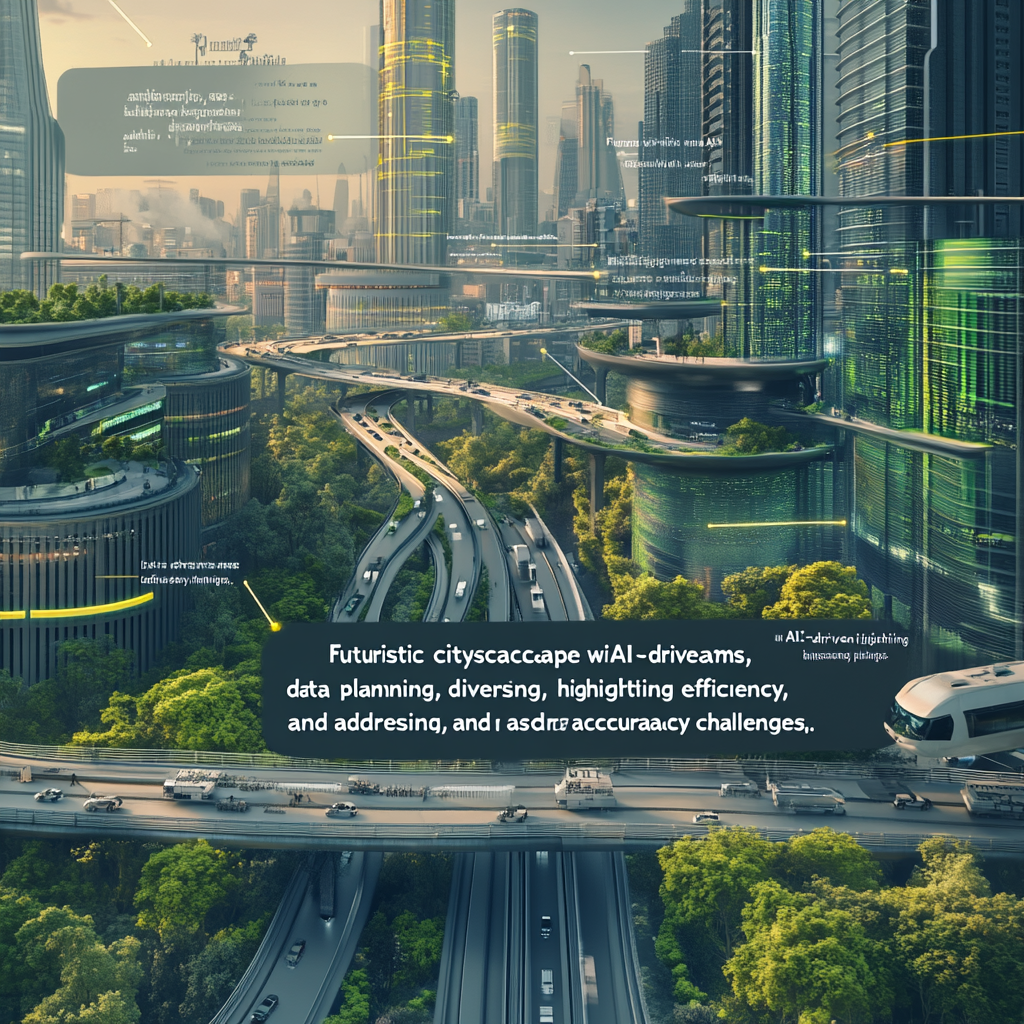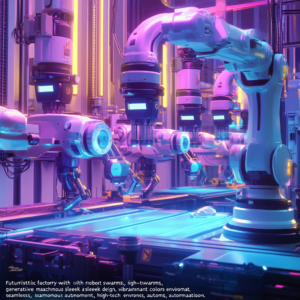
“Future Cities: AI-Driven Urban Design”
In the bustling buzz of our ever-expanding urban jungles, where concrete meets creativity and chaos reigns, the playground of city planning is evolving, twisting, and turning thanks to one mighty force—Artificial Intelligence (AI). You’d be mistaken if you thought good ol’ human intuition was the only thing needed when it comes to designing the cities of tomorrow. Enter AI, swinging in—a digital superhero ready to revive the art of urban development with a splash of innovation. Hot off the press from intellectual powerhouses like MIT and Virginia Tech, the latest whispers in research suggest we might just be on the brink of a planning revolution.
Let’s kick things off with the masterminds at MIT’s Media Lab. Here, researchers have been dancing on the cutting edge with a project dedicated to predicting urban decay and growth through the magic of machine learning. So how does this wizardry work? Picture a colossal vault of knowledge, filled to the brim with data derived from how us mere mortals interpret our urban surroundings. Using a simple yet genius method, volunteers—from diligent Facebook users to your everyday work-from-home hero—are asked to sift through two random images and select which one seems more welcoming or less dangerous. This isn't just fluff; it’s the good stuff—real human insights that fuel the AI’s judgment. Believe it or not, this ingenious process gifts the AI an impressive accuracy rate of over 70%. It’s all about figuring out what it is about neighborhoods that makes them tick—whether they are destinations people flock to or areas best avoided.
Now, swing your attention to Virginia Tech, where another relentless soul, researcher Junghwan Kim, is all about using generative AI to spice up city planning. You see, while traditional city planning often feels like navigating a labyrinth of red tape and infinite spreadsheets, Kim’s approach is decidedly refreshing. By harnessing large language models (LLMs) like ChatGPT and Google’s Gemini, he's putting power back into the hands of the untrained; no computer science degree required. His research unveils the idea that city planning doesn’t have to be just for suits in top offices. Imagine a small-town mayor using an AI-driven tool to smartly manage urban infrastructure without the headache of needing a PhD to understand it.
But wait, there’s more! These AI models can scan street-view images faster than you can say “neighborhood watch,” picking out benches, sidewalks, trees, and streetlights like a hawk zeroing in on its prey. Gone are the days of painstaking manual labor during urban assessments—now it’s all about efficiency and speed, my friends.
And if you think that’s all fantastic, let’s dive into the “how walkable is this place?” conundrum. The AI can help figure out how pedestrian-friendly an area is, altering the perceptions of safety in city policy, and talk about a democratization of data! Suddenly, powerful analytic tools are available for anyone equipped with the brainpower to leverage them, tossing aside the notion that it’s all locked away in the ivory towers of academia.
Now, let’s chat about the shiny mirror with a few cracks. Yes, AI does bring an exciting breeze into the often-stuffy room of city planning, but like any good hero, it comes with its own set of kryptonite. First, there’s the lurking shadow of data bias. We all know that data doesn’t magically appear, and sometimes, it tells a skewed story. There’s a risk of AI systems functioning better in larger cities with extensive datasets while leaving poorer small towns with outdated tactics—yikes! Also, one must tread carefully around AI’s tendency to ‘hallucinate’—yes, you heard me correctly. This means that it can generate assumptions based on gaps, making decisions that might very well take the wrong fork in the road in the decision-making process.
Yet, cast aside those worries for a moment and consider the bright future ahead. We stand on the precipice of a new chapter in urban development. A world where AI seamlessly integrates into city planning could address inequities that have lingered for far too long. The goal? Scaling down these sophisticated technologies, ensuring they’re not just an exclusive playground for the wealthy but a tool for towns of all sizes.
Policymakers, imagine having a treasure trove of data at your fingertips—an oasis of insightful analytics that allows for precise, informed decisions that reflect the needs of all city dwellers. We are talking about crafting vibrant, sustainable environments that ensure no plot of land, no matter how small, is disregarded. The marriage of AI and urban planning isn’t merely a step forward; it’s a giant leap into a realm where the future of our cities is built on intelligent foresight and accessible technology.
So, here’s where you come in; you who read through this quirky blend of fact and fancy. You are now part of the narrative that could reshape your urban experience. Imagine walking down streets designed with input from advanced AI analysis—a future where every block feels appealing, safe, and sustainable. Don’t let the complexity of this tech transformation baffle you. Instead, embrace it. Stand up, engage, and let’s pave the path towards a brighter urban future, together.
Want to stay up to date with the latest news on neural networks and automation? Subscribe to our Telegram channel: @channel_neirotoken. Remember, every great leap towards a smarter city begins with curiosity and action. Join the conversation and be part of the change!

